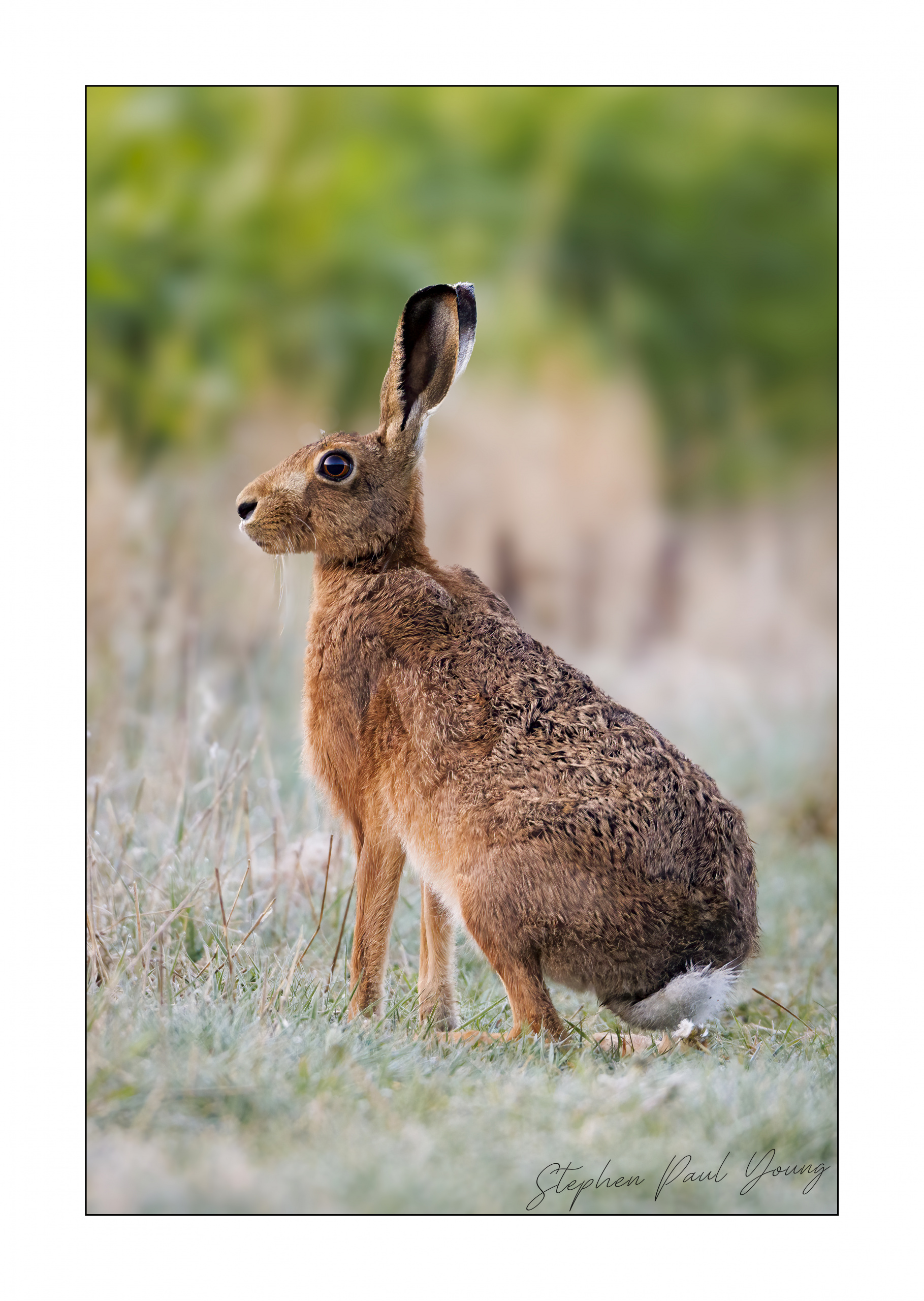
Photographing Brown Hares Through the Year: A Seasonal Guide for UK Wildlife Photographers
The brown hare (Lepus europaeus) is a symbol of both speed and stillness, of sudden drama and quiet poise. Capturing these animals on camera takes more than luck — it demands an understanding of their seasonal rhythms. This timeline offers a month-by-month guide to photographing brown hares across the year, especially in the rolling landscapes of the North Hampshire.
Table of Contents
ToggleA Timed Guide to Capturing the Character of One of Britain’s Most Elusive Mammals
Photographing Brown Hares March – April: Spring Magic Begins
Theme: Rebirth & Renewal
- Behaviour: Hares are highly visible, often “boxing” in daylight — a mix of courtship and female rejection.
- Where to shoot: Farmland margins, low-cut meadows, and pasture edges.
- Photographer’s Tips:
- Capture action with fast shutter speeds (1/1000+ sec).
- Early morning gives soft light and mist.
- Isolate pairs or individuals for storytelling.
Bonus: Use symbolism — spring hares evoke themes of fertility, freedom, and awakening.

Photographing Brown Hares May – July: Fields of Gold
Theme: Flourish & Energy
- Behaviour: Hares graze, rest, and occasionally play in the open, often lying low in “forms” (shallow scrapes).
- Landscape: Ripening crops, buttercup meadows, flowering verges.
- Photographer’s Tips:
- Use long lenses (400–600mm) for compression and low angles.
- Position yourself before golden hour for backlit ears.
- Look for symmetry and negative space in compositions.
Creative Note: Brown hares in tall grasses create an almost mythical effect — ideal for print series or fine art.

Photographing Brown Hares August – October: Autumn Retreat
Theme: Stillness & Solitude
- Behaviour: Less active; hares feed closer to hedgerows and become more solitary.
- Mood: Muted light, dusky colours, quieter scenes.
- Photographer’s Tips:
- Use fog and dusk light to soften silhouettes.
- Play with tones — warm browns, ochres, and soft greys.
- Try black and white film for timeless portraits.
Emotive Tip: Focus on quietude and space — hares appear as figures of thought or memory.

Photographing Brown Hares November – February: Winter Watch
Theme: Survival & Secrecy
- Behaviour: Activity is minimal and usually at dawn or dusk. Fur thickens.
- Landscape: Frosty fields, bare earth, skeletal hedgerows.
- Photographer’s Tips:
- Track movement via footprints or flattened grass.
- Use weather – frost, snow or hoar crystals – for texture.
- Quiet shutter modes are essential.
Bonus Idea: Document change – same hare location, different seasonal light and mood.

Timeline Summary Table
| Month | Behaviour Highlight | Photo Focus |
|---|---|---|
| Mar – Apr | Boxing, courtship | Action shots, storytelling pairs |
| May – Jul | Grazing, golden light | Portraits, meadow backdrops |
| Aug – Oct | Solitude, feeding | Minimal scenes, mist & muted tones |
| Nov – Feb | Caution, cold weather | Silhouettes, frost, survival |
Essential Kit for Hare Photography
- Telephoto lens (ideally 400–600mm)
- Ground mat or beanbag for low-angle shots
- Silent shutter / mirrorless camera
- Camouflage clothing and patience!
- Optional: medium format film for creative depth
Symbolism & Storytelling in Hare Photography
Brown hares are more than just subjects — they carry rich layers of folklore and symbolism. Often linked to rebirth, intuition, and the moon, hares appear in Celtic legends, rural poems, and ancient carvings. As a photographer, you can lean into this heritage by framing hares with natural elements like meadows, brambles, or lone trees. Think in metaphors — a hare in fog might represent uncertainty; a leaping form, freedom. Storytelling images draw viewers in not just for their beauty, but for the emotions they evoke. Let your photos speak of wildness, vulnerability, and the sacred stillness of open land.
Final Thoughts
Photographing brown hares is as much an emotional experience as a technical one. These creatures, steeped in myth and folklore, move with a blend of stillness and sudden energy that few other animals possess. Through each season, they offer a visual story — of birth, freedom, silence, and survival.
To photograph hares well is to honour their world: to rise early, wait quietly, and blend into the land they know better than we ever will. The reward is not just a perfect frame — it’s the feeling of presence, of belonging to a moment where wildness still thrives.
Let your lens do more than capture — let it tell the hare’s story.
Stephen Paul Young
I’m Steve (Stephen Paul Young), a landscape, digital and film photographer with a deep love for capturing the beauty of nature, light, and atmosphere. Whether I’m out at dawn chasing the perfect sunrise, exploring woodland trails, or experimenting with black-and-white film, photography is my way of seeing the world. I’m drawn to the small details and the big vistas alike, always looking for that moment where light, texture, and emotion come together. For me, photography isn’t just about taking pictures—it’s about storytelling, connection, and the joy of being present in the landscape.
You May Also Like

Film vs Digital: My Photography Journey Through Two Mediums
1 November 2024
Elevate Your Creativity: 13 Enchanting Photographs from Mottisfont Abbey
8 January 2024
